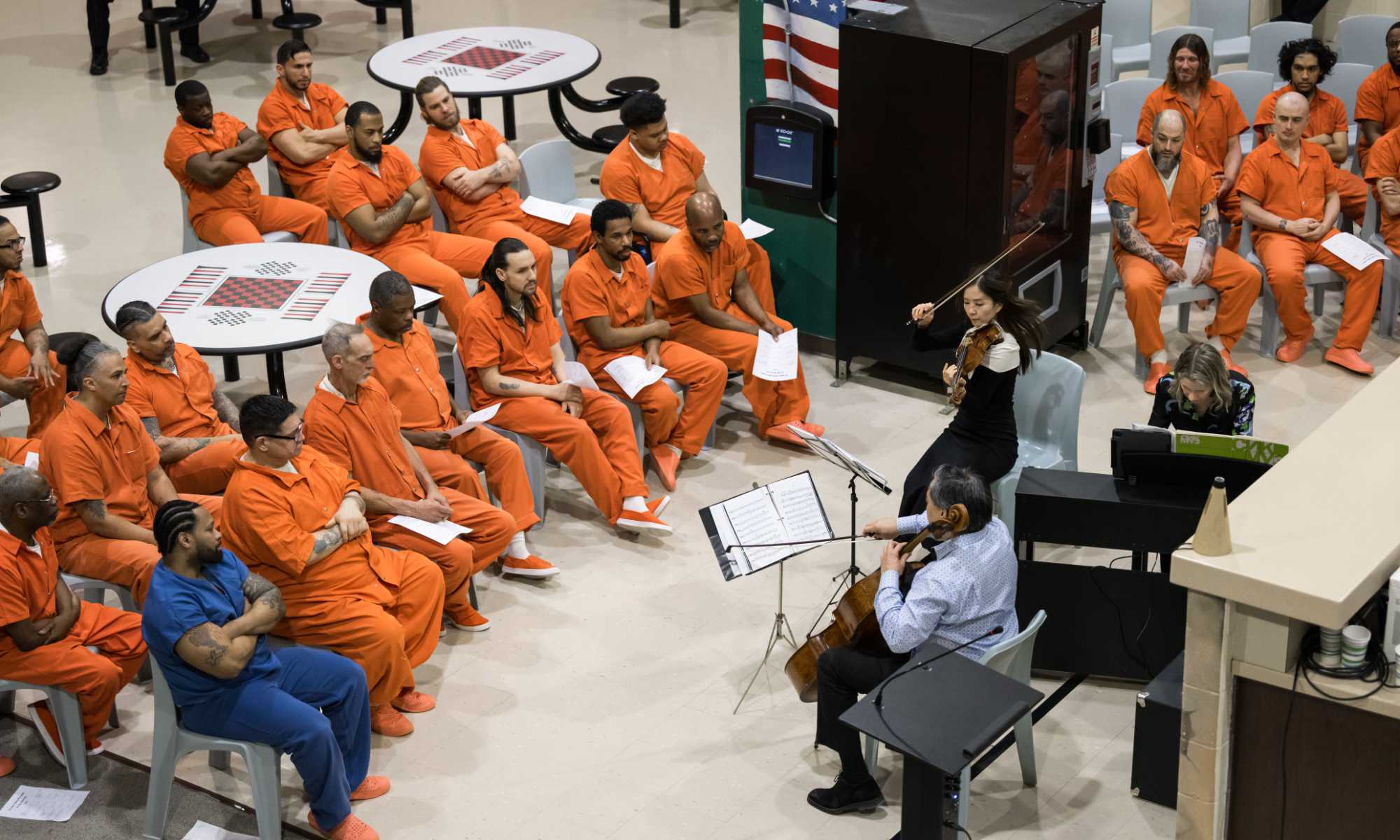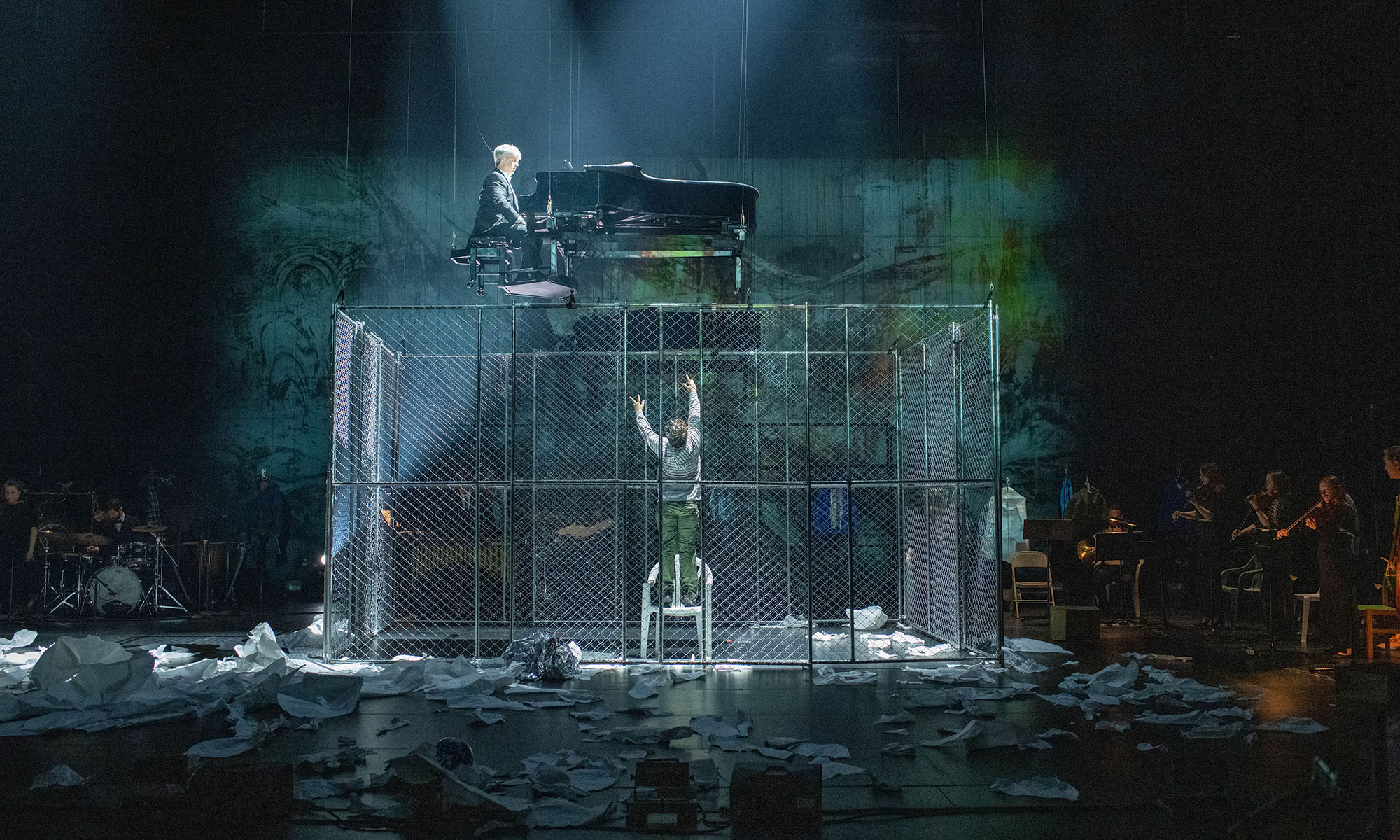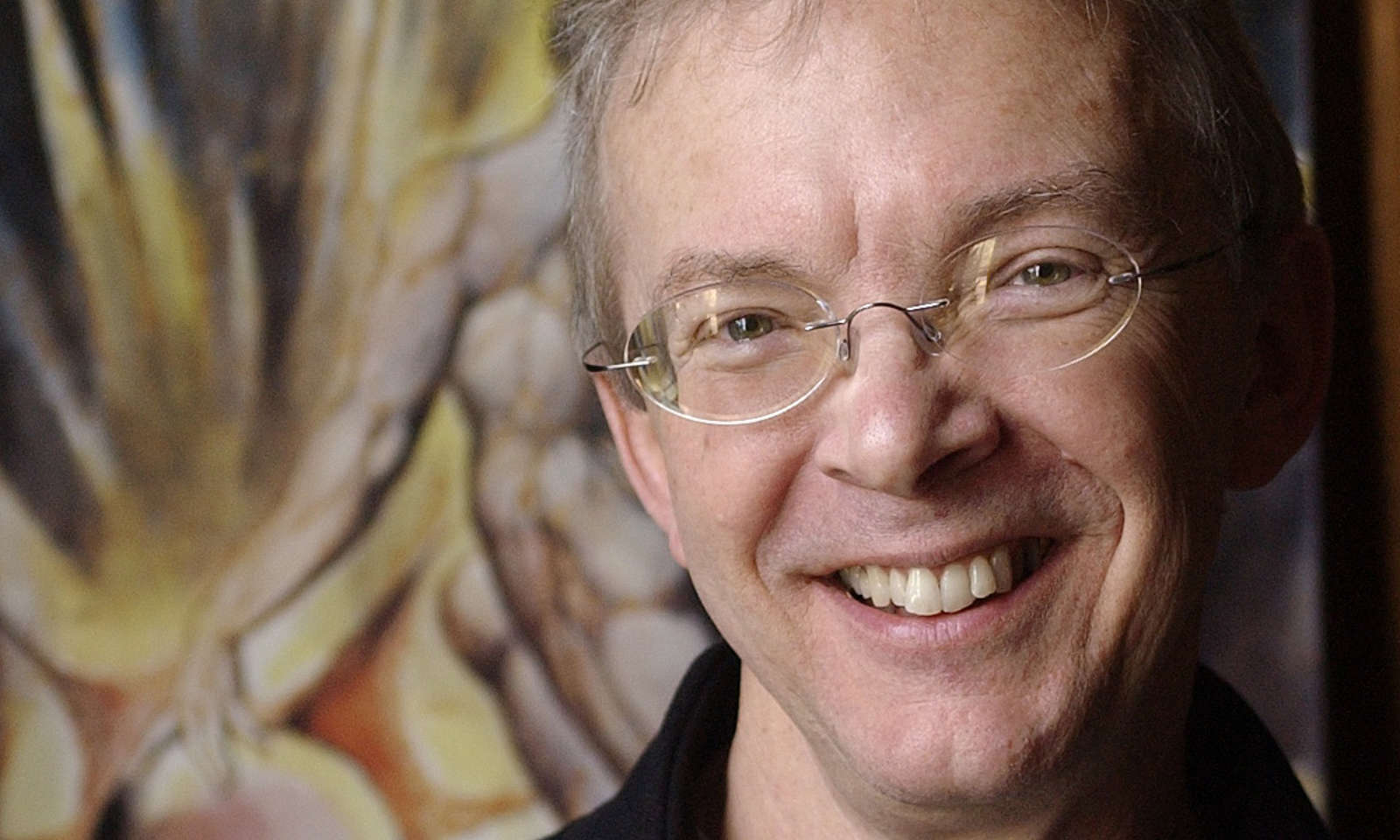It was an instance of serendipity when a local family approached the Hochstein School of Music and Dance in downtown Rochester last spring, hoping to arrange music therapy—with a focus on drumming—for their son, who has autism spectrum disorder.
The request came just one day after Maria Battista-Hancock, director of Hochstein’s expressive arts department, had interviewed jazz drummer D’Jean Vasciannie. He’s a student in the Eastman School of Music’s master’s program in music leadership, and he had applied for a “Humanities for Life” internship.
The new program, supported with a five-year grant from the Andrew W. Mellon Foundation, matches students interested in the arts and humanities with local nonprofit organizations. The paid, 30-hour-per-week internships help Rochester students explore how their skills can be engaged professionally, for the good of the community.
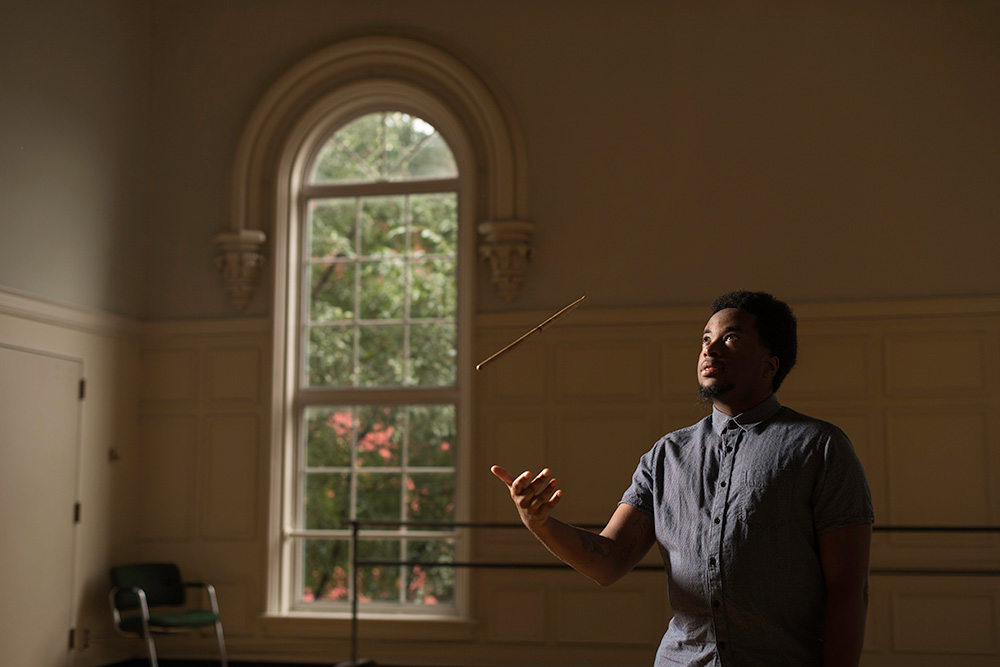
Sixty students applied for the program in its inaugural year, competing for 10 spots. Participating organizations—the Center for Youth, Garth Fagan Dance, Hochstein, Memorial Art Gallery, Out Alliance, Strong National Museum of Play, Writers & Books, and local public radio station WXXI—selected from among the applicants and tailored internships to the students’ goals.
“These organizations haven’t traditionally recruited at the University. It’s an opportunity to build a talent pipeline into the Rochester community,” says Cathy Caiazza, director of career curriculum initiatives at the Gwen M. Greene Center for Career Education and Connections, which works with the University’s Humanities Center in administering the program. She expects the number of applicants to grow next year.
October is National Arts and Humanities Month
Celebrating creativity, cultural inquiry, and the contributions of the arts and humanities to life in the United States throughout its history.
The Department of Music, the Eastman School of Music, the Eastman Community Music School, the Humanities Center, the Institute for the Performing Arts, the Institute for Popular Music, International Theatre Program, Open Letter Books, the Memorial Art Gallery, and Sage Art Center are just some of the University’s homes for humanistic exploration and arts education, exhibition, and performance.
For information on some specific events this month, visit the University’s arts and entertainment events calendar, the Humanities Center events calendar, and the Eastman events calendar.
Vasciannie was a novice teacher, but an expert drummer. Working alongside a trained music therapist, he gave drum instruction to the student as one component of his internship. “Having somebody with D’Jean’s expertise helped the music therapist who now works with this student to have a firmer foundation in how to direct the student in drumming. It gave a depth of flavor to the therapy sessions,” says Battista-Hancock.
Rochester-born Vasciannie, who himself took lessons at Hochstein for a time, has long thought of music in therapeutic terms. “I started playing music as a way to heal, to address any problems going on in life. I wanted to bring that mindset,” he says.
His work with the expressive arts program, which serves more than 1,300 people each year, also gave him hands-on arts administration experience through the development and continuation of organizational partnerships, working especially in collaborations with the Alzheimer’s Association and on “Music for the Ages,” a celebration of the arts for a local senior living community.
“I feel like one’s art, or study of the arts, should reach as many people as possible and be accessible—by doing so, you can find meaning in your craft,” he says, citing the lessons of “To the Next Generation of Artists,” an essay by two of his jazz heroes, Wayne Shorter and Herbie Hancock. “Their first point is, ‘awaken to your humanity,’” he says. “And what I took from that is, you’re not alone. We can’t create alone—other things in life influence you and move you along. And a lot of that is rooted in compassion.”
Battista-Hancock saw the convergence of Vasciannie’s compassion and know-how when she gave him a tour of the department’s facilities. She pointed out the department’s well-worn drum set and mused aloud about how much she’d like to have an electronic set whose volume could be calibrated for clients with auditory sensitivity.
Wheels began to turn in Vasciannie’s head. He called a person he’d met as an Eastman student, a contact at the musical instrument company Yamaha. Thanks to Vasciannie’s intervention, an electronic drum set is now on its way.
“He told them the story of our department and the individuals we work with, who process music and reality in a different way. He explained that a tool like this would be amazing for Hochstein. And now we’re waiting for it to be delivered,” says Battista-Hancock.
That melding of the idealistic and the practical is at the foundation of the “Humanities for Life” program. For Emily Tworek ’20, an internship at Writers & Books, a Rochester literary arts center, was an opportunity to turn her love of literature into a form of community action. Tworek, from Edinboro, Pennsylvania, is majoring in English, theater, and business. She’s interested in artistic administration, and the internship gave her a chance to find out what a career in nonprofit organization leadership would be like.
“They tailored my internship to me, always asking what I wanted to do,” says Tworek. “I wanted to see nonprofit work from the inside, in the hope of being an artistic director or executive director one day.”
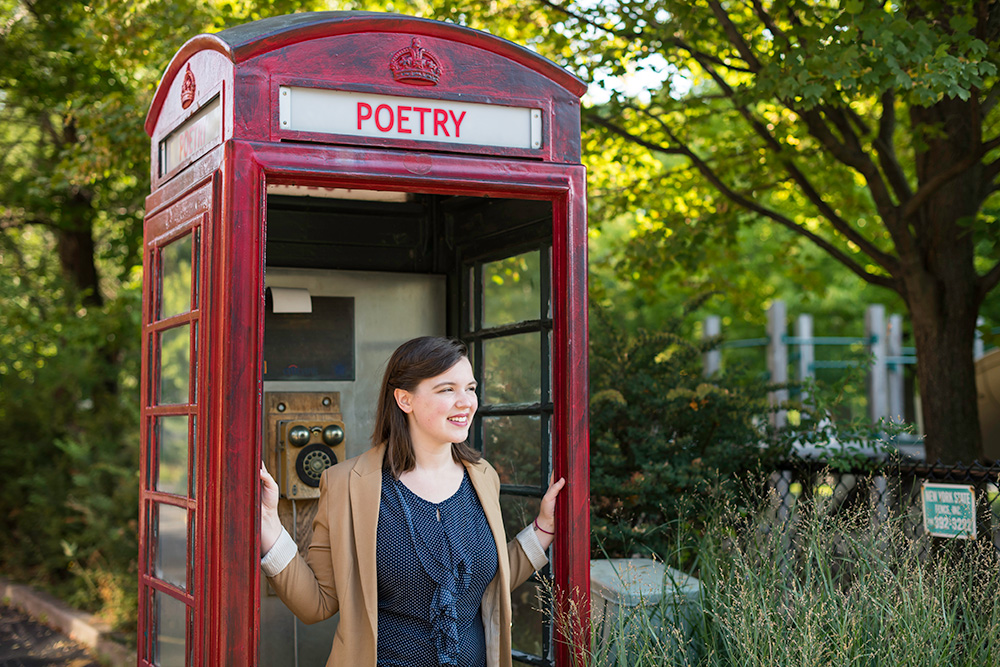
Kyle Semmel, who until recently led Writers & Books, put her to work with budgets, program initiatives, grant writing, and other tasks that fill the day of anyone who leads an arts organization. He says Tworek would be a natural in the job.
“She demonstrated early that we could trust her—and we trusted her with quite a bit,” he says. He ultimately offered Tworek and fellow intern Caitlin Davie ’19—an English and psychology major from Syracuse, who spent the summer working in communications at Writers & Books—part-time staff positions at the end of their internships. Tworek worked as the center’s book-keeper until the end of the fiscal year, and Davie holds the post of membership coordinator.
“A major advantage of an intern program such as this is that we get to see firsthand the quality of the work these individuals are doing, and if we have needs that arise, we can act on opportunities,” says Semmel. “They’re within our network—we know the work they do, we trust them, and it’s a small leap to say, ‘We’ll hire you.’”
All involved say that the fact that these are paid internships makes a critical difference, too. While science, technology, and finance internships are typically funded, most arts and community-focused organizations don’t have the resources to pay interns, says Caiazza—and so humanities students often face a choice between earning money in the summer and taking a professional internship. The program is intended to help redress that dilemma.
Kamilah Robison ’19, a psychology and art history major from Hartland, New York, plans to go on to graduate school in art history or museum studies. But most museum internships are unpaid, “even in cities with a cost of living three times that of Rochester,” she says. “For students interested in art history or museum work internships—which are almost necessary for success in the field—they become unattainable.”
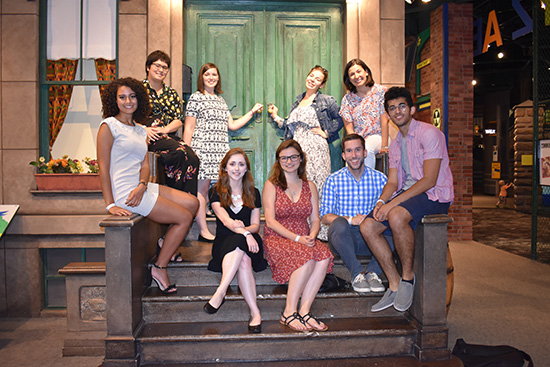
The Memorial Art Gallery selected Robison as its first-ever full-time summer intern. And while most museum internships involve only one department—such as education, curation, or advancement—Robison’s was structured to allow her to work in each of the museum’s departments, helping her to see the ways in which the departments interact and collaborate. “This gives me an edge when I go on to any other museum,” she says.
She attended meetings on curation and on strategic planning, worked on advancement efforts, and learned how to give educational tours. “I was also able to do art historical research on some pieces and really flex my formal training in that way which was exciting. They taught me the ins and outs of interacting with museum members and gave me a behind-the-scenes look at art storage and restoration.”
Funding and a custom-designed internship aren’t the only unusual components of the programs. So, too, is the emphasis on the interns as a cohort, connecting with each other to reflect on their experiences through both a half-credit course and regular Friday “road trips” to all the internship-sponsoring organizations. The outings foster conversations about career opportunities for humanists and give the students a network of relationships with local nonprofit professionals.
For Davie, the visits were eye-opening. “The circuit showed me what’s here in Rochester and confirmed for me that I’d love to work at a nonprofit. And it gave me more confidence about moving forward—to know that I can have a job with responsibility, where my actions have an impact.”
Vasciannie says his internship heightened his sense of what’s possible in an administrative or musical career, and what it can take to achieve it. “Things don’t happen right away,” he says. “It takes time, persistence, an open mind, and creativity when it comes to helping the organization you’re working for and the community you’re trying to serve.”
Battista-Hancock, works with interns from around the country who are drawn to Hochstein’s community mission. But she says the “Humanities for Life” experience is distinctive. “The program takes a personal interest in developing the interns as artists and as community changers,” she says.
And the focus is on the future, says Semmel.
“I think of it as a way of training the next generation of arts leaders.”

